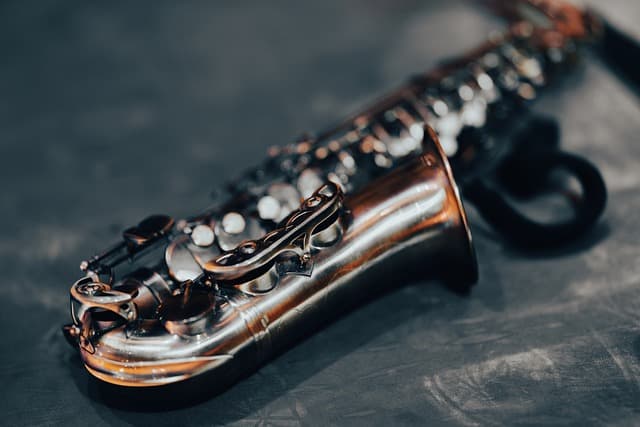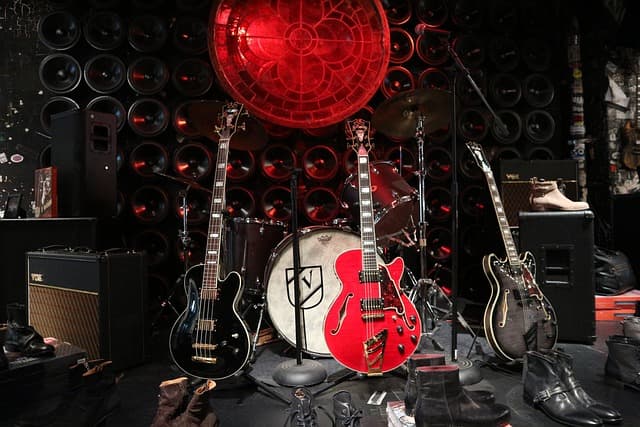
Legends of Jazz
Who teaches a bird to sing? That’s a ridiculous question. It is born with this knowledge. For it, singing and breathing are equivalent. The same can be said about the greatest jazz musician of the 20th century, whose stage nickname Bird became an accurate expression of his virtuoso skills, his inimitable music and his entire life. This musician is Charlie Parker
Charlie Parker began playing the alto saxophone from the age of 11. Gradually, his music lessons so captivated him that at the age of 15 he finally abandoned school and started performing with a youth band, playing at parties and clubs. At that time, musicians could entertain the public night after night, receiving for their work a little more than a dollar. But such practice gave invaluable experience in improvisation. That’s when Charlie got his first nickname Yardbird (Yardbird), which in army slang meant “recruit”, in general – a newcomer, a green bird. But this rookie persevered in pursuit of his dream, exercising 15 hours a day.
In 1938, eighteen-year-old Parker joined the band of jazz pianist Jay McShann (Jay McShann), with whom he worked for several years, touring cities in the American Southwest, as well as performing in Chicago and New York. His first professional recordings as part of an ensemble also date to this time.
New York and bebop
In early 1939, Charlie Parker moved to New York City. Here’s how Billy Eckstine recalls his first appearance on stage at a New York club: “When that ragamuffin played, we all jumped to our feet. Of course, it was Parker. He had, indeed, just arrived by freight train straight from Kansas City. I don’t think he was more than 18 years old at the time; he was, however, already playing the viola like no one else.” * That’s how the “young bird” grew up to become a real Bird – at which time Charlie Parker’s nickname became his middle name – Bird.
However, it was not enough for Bird to master the instrument perfectly, performing the usual jazz arrangements. He was on a constant quest to express the music that was constantly playing in his head. Recalling that time, he said in an interview, “It was December, 1939. I was tired of the stereotypical playing techniques that were used everywhere at that time, and I often thought that the music must be something different. Sometimes I could already hear it in myself, but I didn’t yet know how to grasp and play it.
Parker was not alone in his vision of a new jazz. Young musicians who were honing their skills in the nightclubs of New York City – the dizzying trumpeter Dizzy Gillespie, the virtuoso pianist Thelonious Monk, the frenetic drummer Kenny Clarke – were searching in the same direction. Parker met Dizzy Gillespie in 1942 in Earl Hines’ orchestra, where he had left after working for McShann. This acquaintance introduced him to a circle of like-minded musicians and inspired groundbreaking work together.
New music, or modern-jazz, as progressive musicians themselves called it at the time, was born on the small stages of nightclubs in Harlem. The most famous of these were Clark Monroe’s Uptown House and Minton’s Playhouse. In those days, any musician could come to a club after work and play whatever he or she wanted, and for the most part the audience had little interest in what was happening on stage.
But gradually from these daring searches crystallized something new, in keeping with the spirit of the time – a direction that later became known as bebop. (According to one version of this word was born from the sound imitation, which expressed the most favorite interval course at that time – the descending diminished quinta.) This music with short energetic phrases, devoid of the usual melody, sharp impulsive transitions, characteristic broken rhythm was unfamiliar to the general public, difficult to perceive. Out of 20 people who heard it, 15 remained in bewilderment. However, as time went on, she won more and more fans.
In 1944, Parker with Gillespie and a group of like-minded people organized their own small ensemble, which became the first group to perform bebop. Over the next few years, Parker made a series of classic recordings with Red Norvo, with Gillespie’s quintet (Salt Peanuts and Shaff Naff), and his first solo recording (Billie’s Bounce, Now’s the Time, Koko). The new music was controversial, but it also attracted audiences.
All that remains after …
In the early 1950s came a very difficult period in the musician’s life. However, he never stopped experimenting. Charlie Parker made some excellent studio recordings with string bands. His interests at this time go beyond jazz, he begins to be interested in classical music. Here’s what he had to say about it: “The first was Stravinsky’s Firebird Suite. I heard the folk language of the streets and I was mesmerized. I just lost my head. I think Bartok will also become my favorite composer. I like all modern composers, but I also love the classics – Bach, Beethoven, etc. “* He wanted to take lessons from the composer Edgar Varèse. However, the plans were not destined to materialize.
Bird died on March 12, 1955, before thirty-five years.

